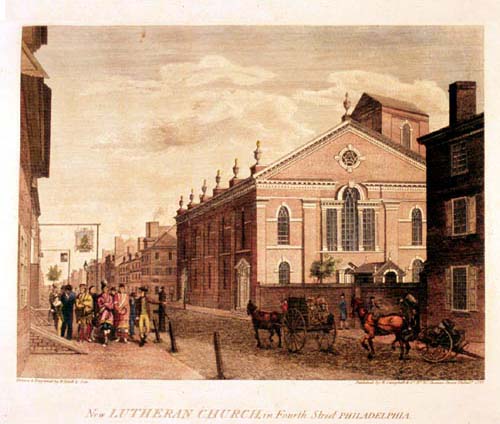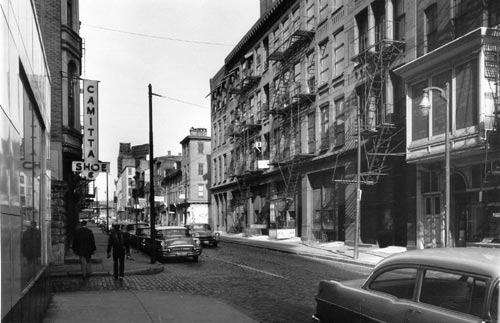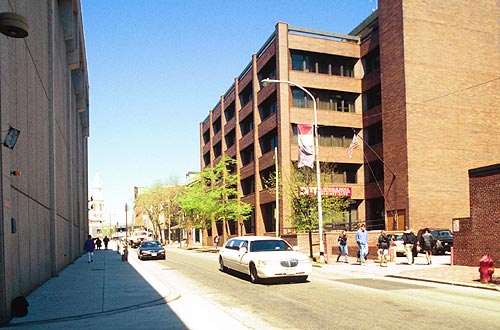The New (Zion) Lutheran Church on Fourth Street below Cherry was built 1766-69 from designs of Robert Smith (who also designed Carpenters' Hall, built 1770-75, and St. Peter's Episcopal Church, built 1758-61). It was destroyed by a fire on December 26, 1794, rebuilt 1795-96 and razed 1869. When the church reopened in 1796, its mostly German immigrant congregation could boast of the largest church building in the nation's capital. On December 26, 1799, five years to the day after the fire, the rebuilt New Lutheran Church overflowed with mourners. Twelve days before, on December 14, George Washington died unexpectedly at Mt. Vernon. In Philadelphia, on December 26, by decree of Congress, an official memorial service was held at the New Lutheran Church (See Plate 11). During the years Philadelphia was the nation's capital (1790-1800) delegations of Indians, who had come to settle their affairs with the federal government, were often seen being shown around the city. Here by Frederick Augustus Muhlenberg, the Speaker of the House of Representatives.
Photographs
On Fourth Street above Cherry, a group of buildings (2000 BG-L) were restored to appear as they did in the Birch engraving (BG-L). St. Augustine's Church and steeple (2000 BG-L) was first built 1796, destroyed by fire 1844 and rebuilt 1847-48. Many of the commercial buildings that appear in the 1960 photograph have been replaced by newer structures. On Fourth Street below Cherry, the Teamsters' building (MG-R), built 1974, houses Teamster Union offices as well as a private business school. In 1969, in the block bounded by Fourth and Fifth, Race and Arch Streets, construction was completed on the new United States Mint Building (FG-L). The first United States Mint was established in 1792 in Philadelphia at Seventh and Filbert Streets. At that time Congress made the dollar the legal unit of currency, discarding the English system of pounds, shillings and pence. David Rittenhouse, the Germantown master fabricator of clock mechanisms and scientific instruments, was appointed superintendent of the Mint, which turned out decimal coinage in gold, silver and copper. American commerce and industry derived great benefits from having a standard national currency and coinage.
Back Next




